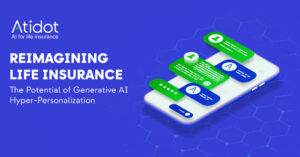Traditionally, life insurance companies store their data in different formats and in different systems, isolating it from real analysis. But the legacy systems do not provide a means of strategically using data and insurers are subsequently losing out in an increasingly competitive market.
Advances in artificial intelligence, machine learning, and predictive analytics have opened a new world of opportunity for life insurance companies. Digitalization in the 1990’s created an explosion of available data, but for a long time, this surge was not matched by corresponding technological developments that allowed the data to be processed, manipulated, and transformed into actionable insights.
One of the greatest challenges currently facing actuaries in the life insurance industry is that while senior management is eager to put the abundance of data to practical use, actuaries are often not equipped with the know-how to apply the latest technologies to their own data and to accurately predict the future behavior of their clients.
Life insurers are realizing that outdated ways of doing business are no longer viable. For decades, the sector was slow to adapt to new technologies that other industries were responding to, and entrenched IT departments coupled with insufficient pressure to adapt were the enemies of innovation.
Today, insurers are working in a very different climate. In a 2016 PwC survey, three-quarters of insurance companies acknowledged that their business was going to be affected by technology disruption and feared that their traditional operations might lose to new contenders. A similar percentage of insurers surveyed in 2015 said that they expected to use big data in pricing, underwriting, and risk selection within two years.
Some companies are adapting to this new landscape by harnessing new data analysis tools to enable life insurance companies to monetize their in-force data and customer base. By taking advantage of artificial intelligence, machine learning, and predictive analytics, these systems augment the data, both internal and public, held by life insurance providers, grouping cohorts of policyholders together for meaningful analysis, to find the embedded value in a book of business.
Unlocking the structure within unstructured data is the key to further insights, which are enriched by publicly available external data. Advanced models can apply the features most relevant to insurance. Every time data is entered into these machine-learning models, the process is quicker than before, giving insurers greater insights in a significantly shorter length of time.
Raw data is the key to insurers staying ahead of the competition. Life insurers can continue to do what they do best—but now with the tools to irrigate their data and watch the profits bloom.



 min read
min read 
 min read
min read

 min read
min read
 min read
min read


